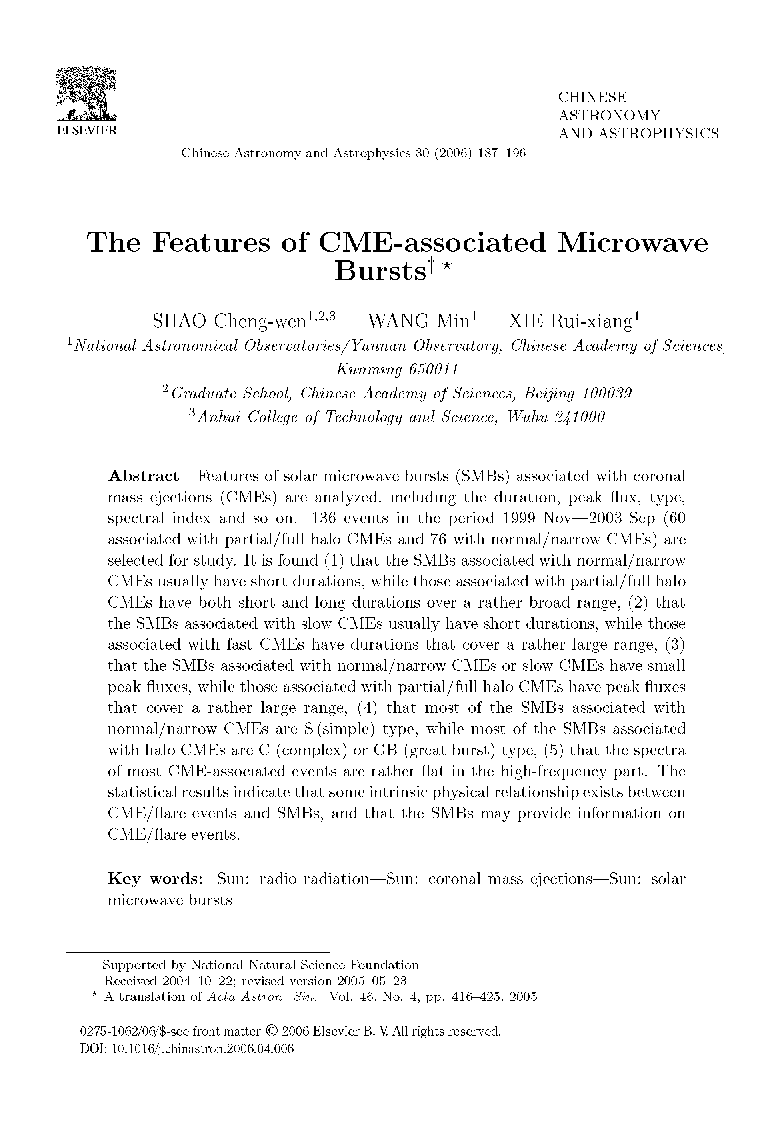| Article ID | Journal | Published Year | Pages | File Type |
|---|---|---|---|---|
| 1772218 | Chinese Astronomy and Astrophysics | 2006 | 10 Pages |
Features of solar microwave bursts (SMBs) associated with coronal mass ejections (CMEs) are analyzed, including the duration, peak flux, type, spectral index and so on. 136 events in the period 1999 Nov–2003 Sep (60 associated with partial/full halo CMEs and 76 with normal/narrow CMEs) are selected for study. It is found (1) that the SMBs associated with normal/narrow CMEs usually have short durations, while those associated with partial/full halo MEs have both short and long durations over a rather broad range, (2) that the SMBs associated with slow CMEs usually have short durations, while those associated with fast CMEs have durations that cover a rather large range, (3) that the SMBs associated with normal/narrow CMEs or slow CMEs have small peak fluxes, while those associated with partial/full halo CMEs have peak fluxes that cover a rather large range, (4) that most of the SMBs associated with normal/narrow CMEs are S (simple) type, while most of the SMBs associated with halo CMEs are C (complex) or GB (great burst) type, (5) that the spectra of most CME-associated events are rather flat in the high-frequency part. The statistical results indicate that some intrinsic physical relationship exists between CME/flare events and SMBs, and that the SMBs may provide information on CME/flare events.
